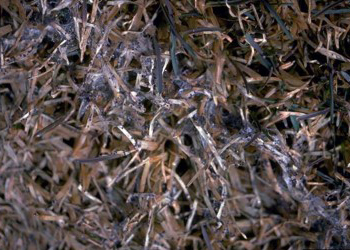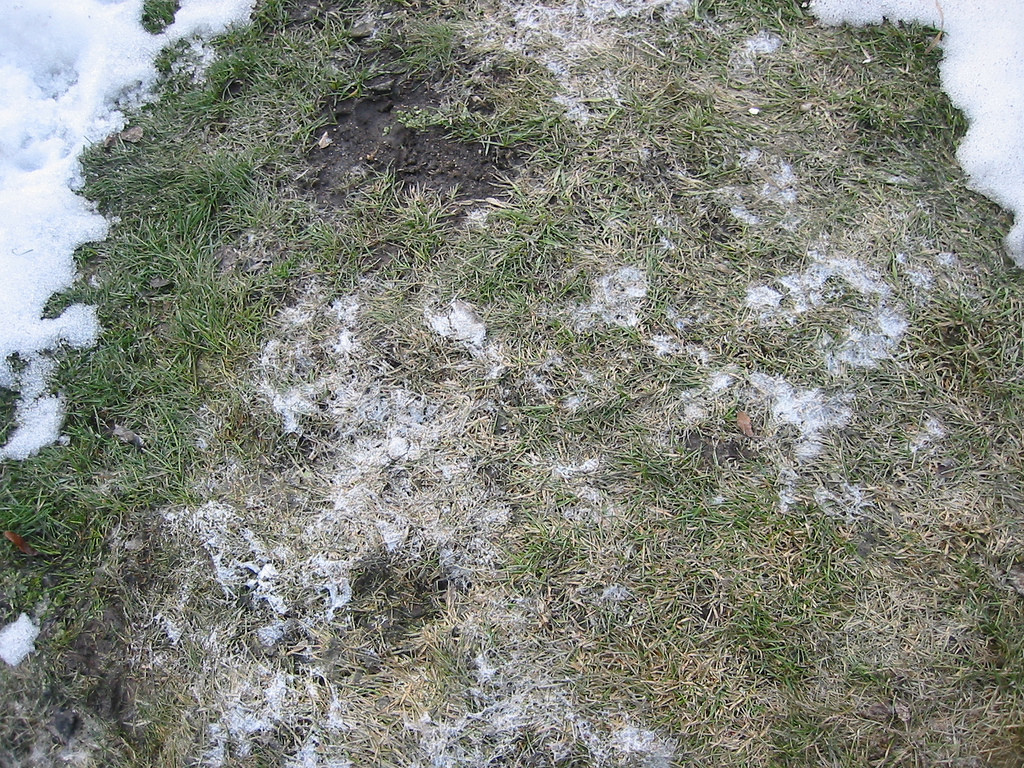Integrated Pest Management
Gray Snow Mold
Typhula sp.
Hosts, Symptoms & Signs
- affects all grass types
- circular patches visible after snowmelt
- size of spots ranges from 1 inch to 2 – 3 feet
- leaves are matted and often white to gray mycelium is visible (disappears after desiccation)
- typically only leaves are infected
- plants regrow as soon as temperatures rise
- small, hard, reddish-colored fruiting structures (sclerotia) can be seen on grass; the sclerotia are the fungal survival structures
Disease Cycle
- oversummers as sclerotia (hard balls of fungal tissue in plant debris)
- sclerotia germinate under wet and cold conditions
- resulting mycelium infects turfgrass under snow cover
- newly formed sclerotia oversummer again and cause new infections the following fall in the same location
IPM Recommendations
- Avoid heavy nitrogen fertilizer in fall to avoid fast growth of grass before snowfall. Fertilizer should be applied a few weeks prior to dormancy to stimulate root growth.
- Mow until late fall to avoid snow falling on tall grass and weighing it down.
- Avoid compaction of snow by skis, etc., and large snow drifts.
- Apply a fungicide (azoxystrobin; iprodione; propiconazole) as a preventative treatment in fall; these fungicides are not useful as a curative treatment.
For more information, see our Snow Mold on Turfgrass fact sheet.




